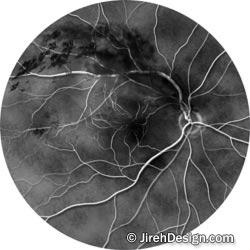Fluorescein Angiography (FA)


Fluorescein Angiography (FA)
Fluorescein angiography, also called a fluorescein angiogram (fluorescein – the type of dye that is used; angiogram – a study of the blood vessels – in this case, on your retina) is a valuable test that provides information about the condition of the retina.
Fluorescein angiography is useful for evaluating many eye diseases that affect the retina in the back of the eye.
Eye conditions that are commonly diagnosed with fluorescein angiography are: diabetic retinopathy, macular degeneration, cystoid macular edema, central serous retinopathy.
Although statistically very rare, adverse reactions to the intravenous dye have been reported. You should discuss the risks and benefits of this common study with your ophthalmologist.
At The Macula Center, these photos are taken with a digital camera system, allowing Dr. Deupree to interpret the results immediately.






